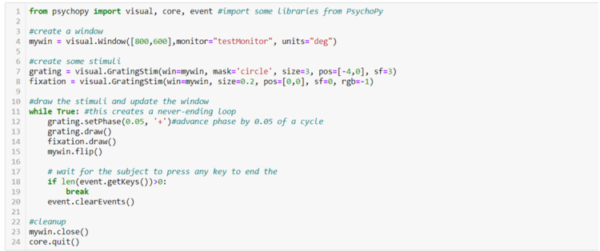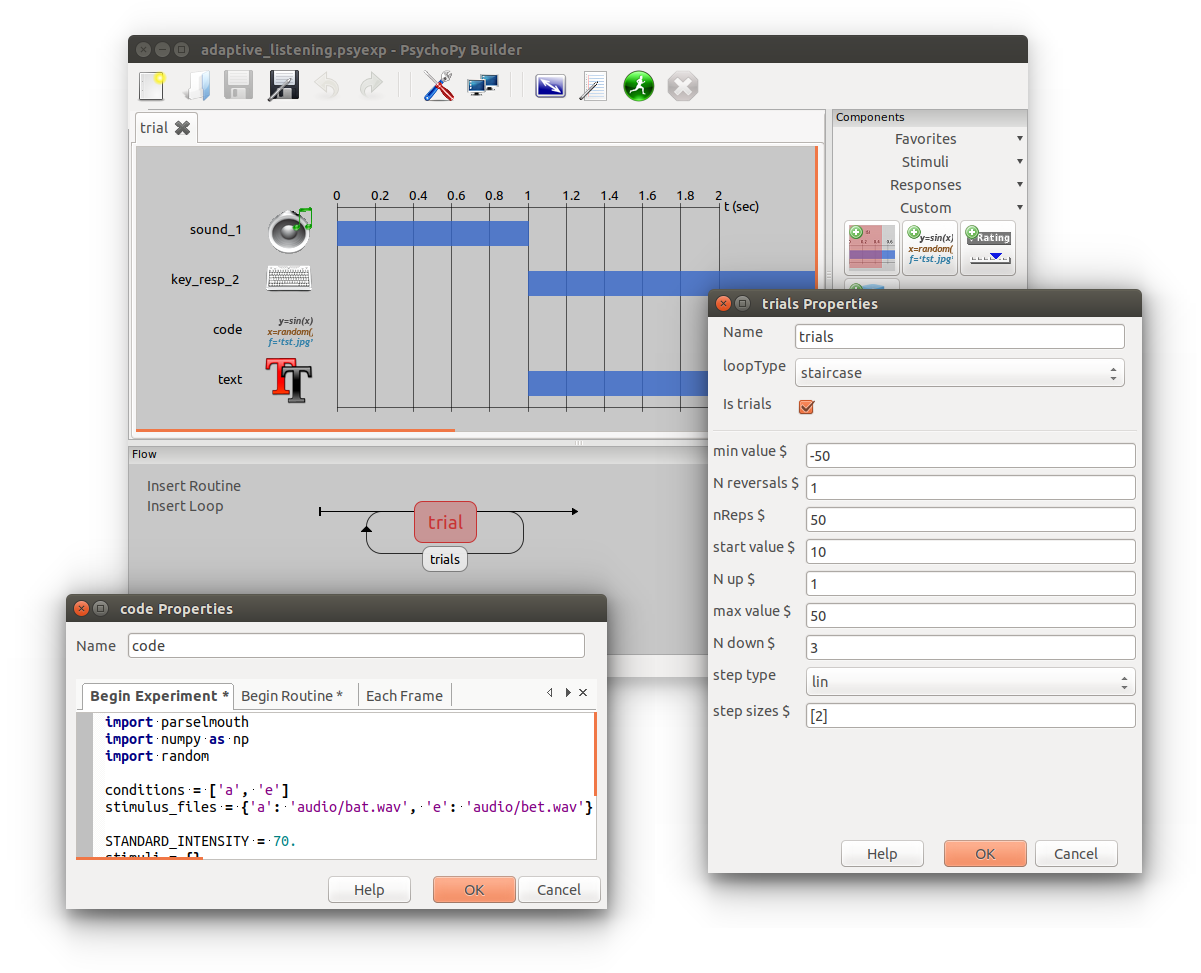

Latency can easily be in the region ofģ00ms! The advantage of this move is that it will always work and always play a sound, The modes are as follows: 0 : Latency not importantįor when it really doesn’t matter. PsychoPy ® uses Mode 3 in as a default, assuming that you want low latency and youĭon’t care if other applications can’t play sound at the same time (don’t listen Referred to in PsychToolBox as the reqlatencyclass, and can be set in When using the PTB backend you get the option to choose the Latency Mode, Next refresh but set the latency mode to be 0 (which has a lag of around 300 ms) if you request that the sound starts on the The precision of that timing is still dependent on the PTB Audio Latency ModesĪnd can obviously not work if the delay before the requested time is not longĮnough for the requested mode (e.g. play ( when = nextFlip ) # sync with screen refresh getFutureFlipTime ( clock = 'ptb' ) mySound. Import psychtoolbox as ptb from psychopy import sound, visual mySound = sound. Using psychtoolbox.GetSecs() if you want to play sound at an arbitrary time The whenĪrgument needs to be in the PsychToolBox clock timebase which can be accessed by To do this you can call play() with an argument called when. Time taken to load the sound (it will preload ready) and also the time taken By doing this PTB can actually take into account both the The most precise way to use the PTB audio backend is to preschedule the Hz tone played at 48 kHz with PTB engine. 26 Sub-ms audio timing with standard audio on Win10. Yourself for your kit, but here is an example of a standard Win10 box usingįig.

Many things about the local operating system and hardware. Of course, capable doesn’t mean it’s happening in your case. With this method the PTB engine is capable of sub-ms precision and even The buffers ready to go and will also account for the known latencies in theĬard. Sent or when the screen is due to flip) and the PTB engine will then prepare all Sound to occur at a particular point in time (e.g. That’s pretty good compared to the other options that have a lag ofīUT, on top of that, PTB allows you to preschedule your Play in “immediate” mode with typically in the region of 5ms lag and maybe 1ms Result, with the most aggressive low-latency settings you can get a sound to
RAND INT PSYCHOPY DRIVERS
Get the best out of the drivers available on each operating system and, as a

On-the-fly mixing and filtering capabilities). PTB brings a number of advantages in terms of latency.īeen designed specifically with low-latency playback in mind (rather than, say, The class that gets imported will then be an alias of one of the Have slightly different attributes, as below. “backend” you use (like pyo or sounddevice) and these different backends can Sounds are actually generated by a variety of classes, depending on which Use it if latencies for your audio don’t matter. The pygame backend is the oldest and should work without errors, but has the It’s newer than pyo and so more prone to bugs and we haven’t yetĪdded microphone support to record your participants. Well because it operates from the same computer core as the main experimentĬode). This might be less so in cases where you have complex rendering being done as The sounddevice library has performance that appears to be good (although Studies then this could be the one for you. Often had issues (at least on MacOS) with crashes and freezing of experiments, The pyo library is, in theory, the highest performer, but in practice it has The PTB library has by far the lowest latencies and is strongly recommended Based on testing doneīy the PsychoPy ® team and reports from users, their performance can be summarized Audio playbackīackends vary in performance due to all sorts of factors.

This preference can be set on a per-experiment basis by importing preferences,Īnd setting the audioLib option to use. sound.Sound() will then refer to one of the following backends: YouĬan select which will be used via the audioLib Supports a choice of sound engines: PTB, pyo, sounddevice or pygame. Audio playback is handled by the Sound class.


 0 kommentar(er)
0 kommentar(er)
